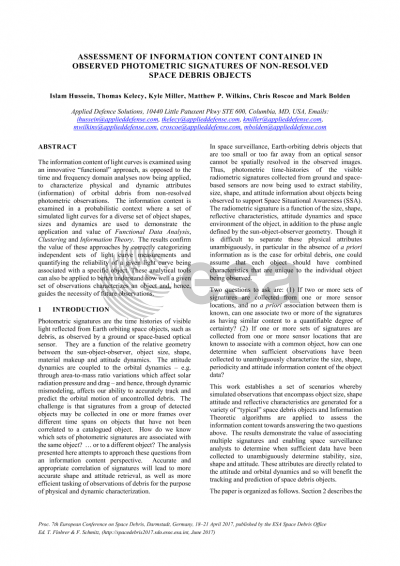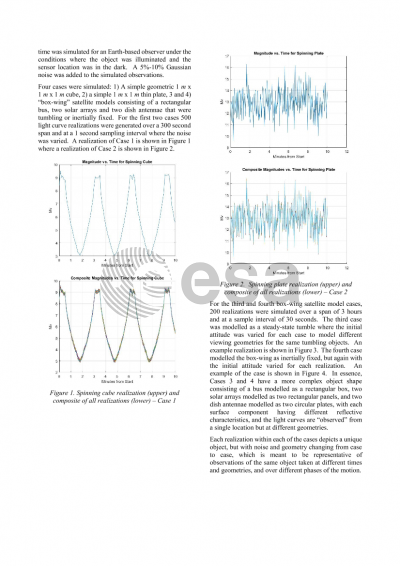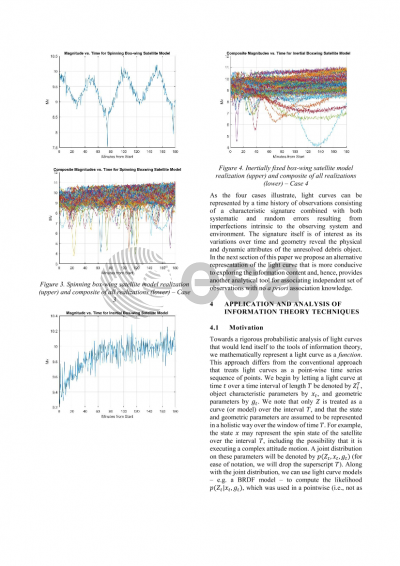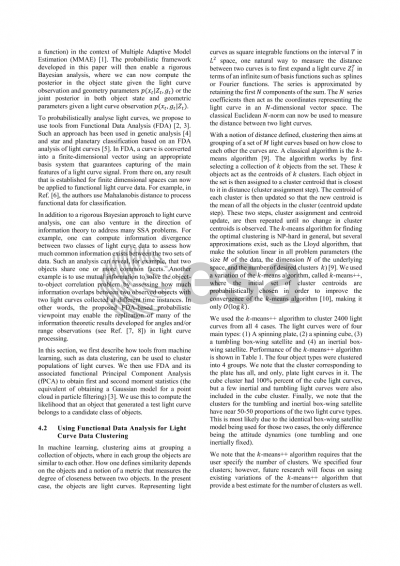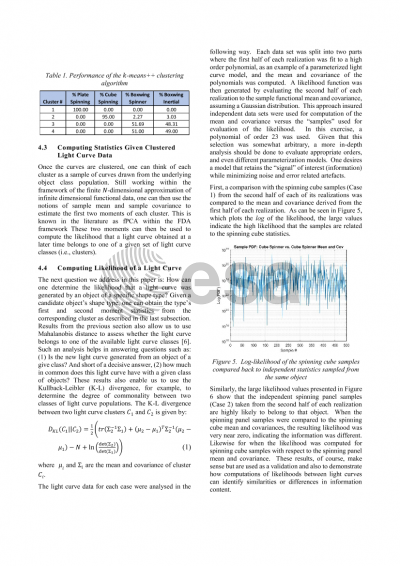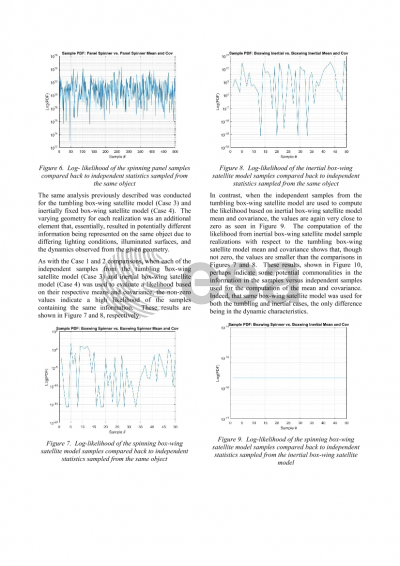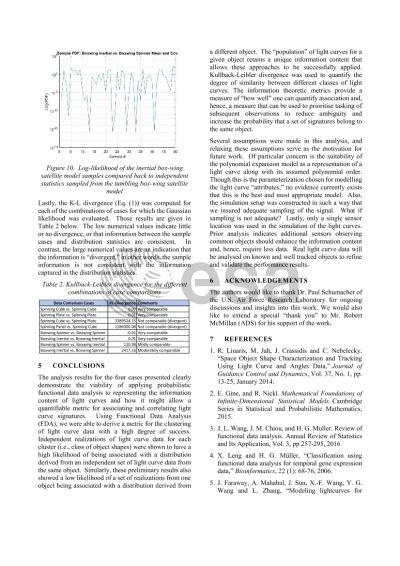Document details
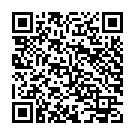
Abstract
In space surveillance, Earth-orbiting debris objects that are too small or too far away from an optical sensor cannot be spatially resolved in the observed images. Thus, photometric time-histories in the visible radiometric signatures collected from ground and space-based sensors are now being used to extract stability, size, shape, and attitude information about objects being observed to support Space Domain Awareness. The radiometric signature is a function of the size, shape, reflective characteristics, attitude dynamics and space environment of the object, in addition to the phase angle defined by the sun-object-observer geometry. Though it is difficult to separate these physical attributes unambiguously, in particular in the absence of a priori information as is the case for orbital debris, one could assume that each object should have combined characteristics that are unique to the individual object being observed. Two questions to ask are: (1) If two or more sets of signatures are collected from one or more sensor locations, and no a priori association between them is known, can one associate two or more of the signatures as having similar content to a quantifiable degree of certainty? (2) If one or more sets of signatures are collected from one or more sensor locations that are known to associate with a common object, how can one determine when sufficient observations have been collected to unambiguously characterize the size, shape, periodicity and attitude information content of the object data? This work establishes a set of scenarios whereby simulated observations that encompass size, shape attitude and reflective characteristics are generated for a variety of “typical” space debris objects and Information Theoretic algorithms are applied to assess the information content towards answering the two questions above. The results demonstrate the value of associating multiple signatures and enabling space surveillance analysts to determine when sufficient data have been collected to unambiguously determine stability, size, shape and attitude. These attributes are directly related to the attitude and orbital dynamics and so will benefit the tracking and prediction of space debris objects.
Preview
